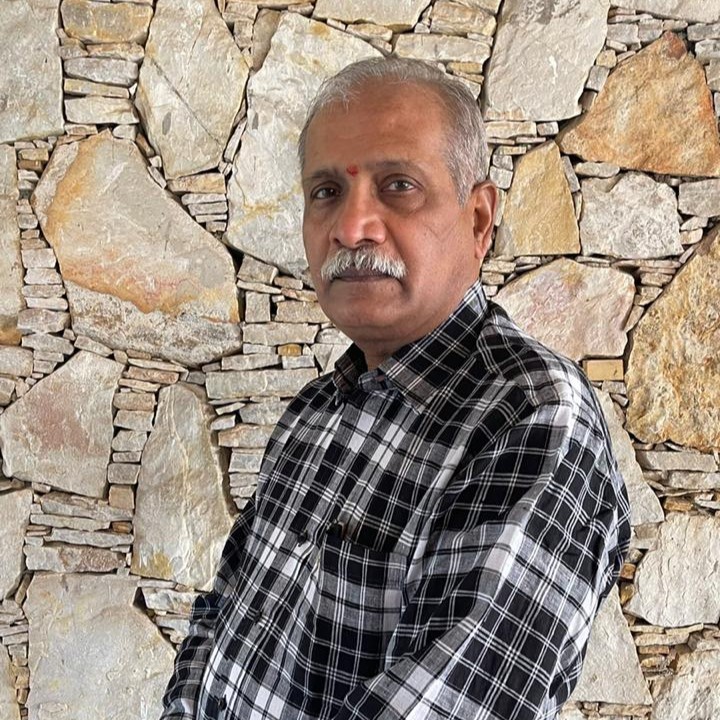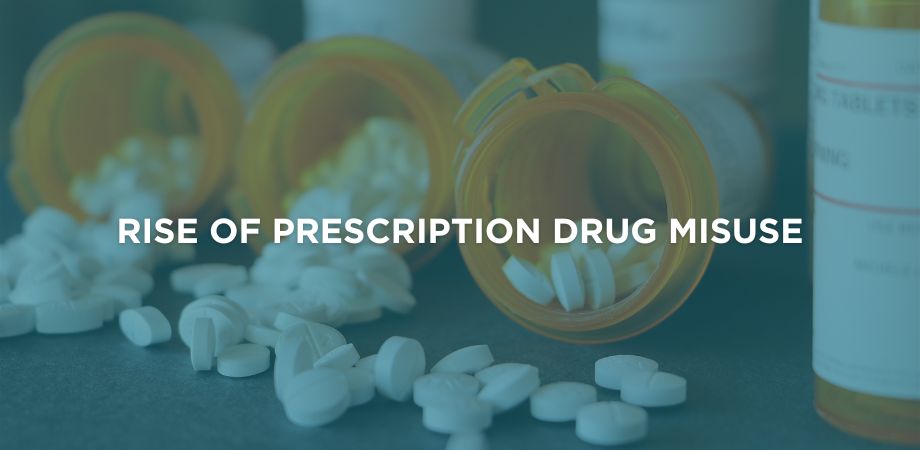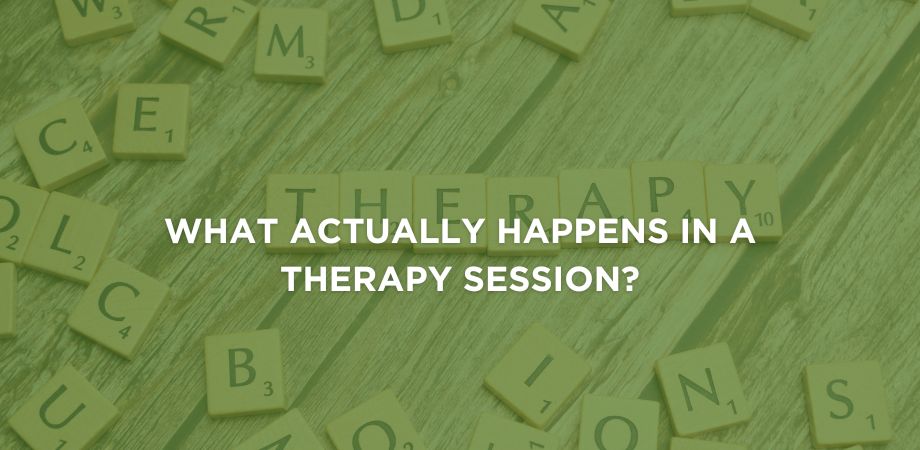Prescription drug addiction is attributed to compulsive and harmful use of medications prescribed for legitimate medical reasons. The National Drug Dependence Treatment Centre (NDDTC) and All India Institute of Medical Sciences (AIIMS) estimate around 7.21 crore (72.1 million) people are affected by drug abuse in India, with opioids, sedatives, and prescription drugs contributing substantially to the burden.
Symptoms of prescription drug addiction manifest as tolerance, cravings, mood swings, and withdrawal discomfort when medication use is reduced.
Causes of prescription drug addiction encompass prolonged prescriptions, genetic vulnerability, untreated mental health conditions, and misuse for pain relief or performance enhancement.
The side effects of prescription drug addiction show up as drowsiness, confusion, liver and kidney damage, poor concentration, and increased accident risk.
Withdrawal from prescription drug addiction brings physical and psychological challenges such as nausea, sweating, tremors, insomnia, anxiety, and seizures in severe cases.
Treatment for prescription drug addiction relies on structured de-addiction programs combining medical detoxification, behavioural therapies, and medication-assisted treatment.
Recovery strategies for prescription drug addiction emphasise de-addiction programs in relapse prevention planning, peer support groups, counselling, and sustainable lifestyle changes to restore health and prevent recurrence.
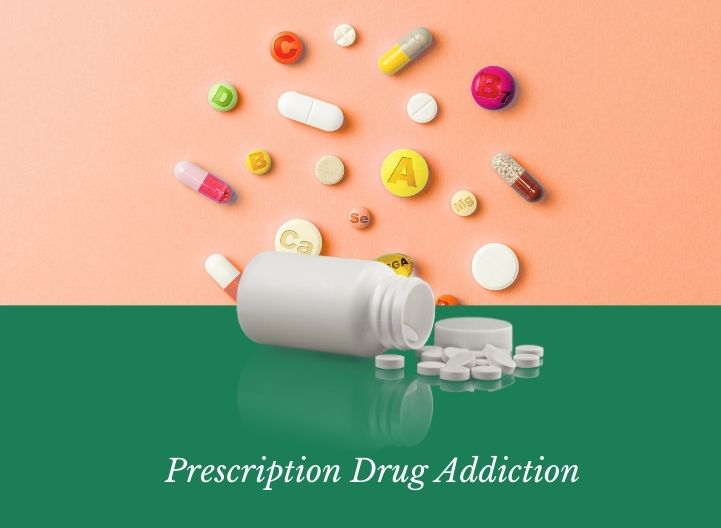
What Is Prescription Drug Addiction?
Prescription drug addiction is a chronic condition in which a person develops compulsive patterns of misuse toward medications that were initially prescribed for legitimate medical reasons. It occurs when an individual continues taking drugs such as opioids, benzodiazepines, stimulants, or sedatives beyond the recommended dosage or duration, chasing the drug’s mood-altering or pain-relieving effects.
Progressively, the brain’s reward system becomes rewired, leading to tolerance, where higher doses are needed to achieve the same effect, and dependence, where the body struggles to function normally without the drug. Unlike short-term medical use, addiction is marked by an inability to control intake, cravings, and continued use despite harmful consequences, affecting physical health, mental stability, relationships, and overall quality of life.
A national household survey estimated that around 0.6 million people in India use sedatives or hypnotics, including prescription sleeping pills and related medications. Among these users, approximately 17-26% are classified as dependent, underscoring significant treatment needs, as reported by Kumar S. in 2004 in “India Has Widespread Drug Problem, Report Says.”
What Are the Commonly Abused Prescription Drugs?
What Are the Commonly Abused Prescription Drugs?
Opioids
Opioids are pain-relieving medications such as oxycodone, hydrocodone, morphine, and codeine. While prescribed for moderate to severe pain, they are highly addictive and spark euphoria, leading to misuse, tolerance, and overdose risks.
Benzodiazepines
Benzodiazepines entail drugs like diazepam, alprazolam, and lorazepam, prescribed for anxiety, insomnia, and seizures. Misuse develops due to their calming effects, resulting in tolerance, dependence, and dangerous withdrawal symptoms such as seizures.
Stimulants
Stimulants such as methylphenidate and amphetamines are prescribed for ADHD and narcolepsy. Their misuse stems from the perceived enhancement of focus and energy, but this breeds addiction, cardiovascular strain, and mental health problems.
Sedatives and Hypnotics
Sedatives like barbiturates and prescription sleep medications such as zolpidem are misused for their sedative effects. Dependence precipitates memory impairment, respiratory depression, and heightened overdose potential.
Cough Syrups & Medicines
Prescription-strength cough syrups containing codeine or dextromethorphan are also commonly abused. High doses produce euphoric or hallucinogenic effects, with risks of respiratory suppression and long-term health damage.
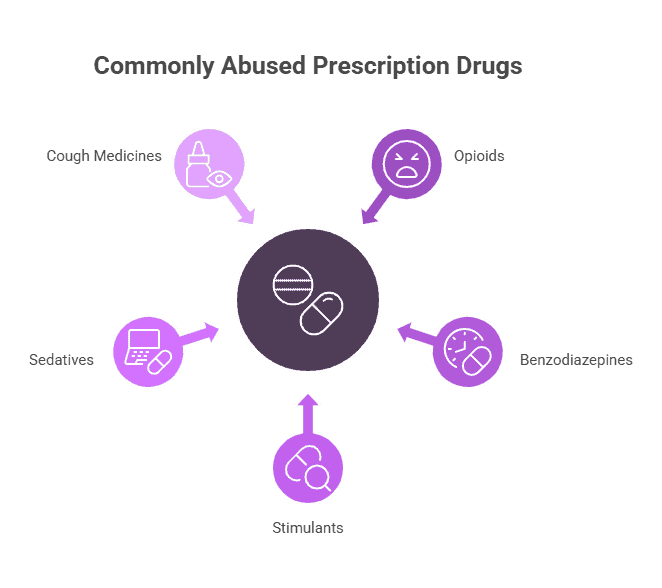
What Are the Symptoms of Prescription Drug Addiction?
The symptoms of prescription drug addiction are discussed below, categorized into physical, behavioral, and psychological signs:
- Physical Symptoms: Drowsiness, slurred speech, poor coordination, nausea, constipation, and changes in appetite or sleep patterns. Depending on the type of drug abused, individuals may also experience slowed breathing or rapid heartbeat.
- Behavioural Symptoms: Common behaviours are doctor shopping (seeking multiple prescriptions from different doctors), taking higher doses than prescribed, frequent requests for refills, and secretive use. Individuals also neglect responsibilities at work, school, or home.
- Psychological Symptoms: These manifest as increased anxiety, irritability, mood swings, confusion, or paranoia. Obsessive thinking about obtaining and using the drug, along with a strong craving, rises.
- Social Symptoms: Strained relationships, withdrawal from social activities, and financial difficulties owing to drug-seeking behaviour are also notable indicators of prescription drug addiction.
What Are the Causes of Prescription Drug Addiction?
The causes of prescription drug addiction are multifaceted and are outlined below:
- Underlying Medical Conditions: Chronic pain, anxiety, depression, or sleep disorders lead to long-term prescriptions, increasing the likelihood of dependency.
- Prolonged Use of Medication: Extended use of opioids, sedatives, or stimulants creates tolerance, where higher doses are needed to achieve the same effect, eventually solidifying addiction.
- Genetic and Biological Factors: A family history of addiction or differences in brain chemistry predispose individuals to developing dependency on prescription drugs.
- Psychological Influences: Stress, trauma, or untreated mental health disorders push individuals toward misuse as a coping mechanism.
- Environmental and Social Factors: Easy access to medications, peer pressure, and lack of awareness about the addictive potential of prescriptions contribute to addiction risks.
- Misuse and Self-Medication: Taking higher doses than prescribed, using someone else’s medication, or mixing drugs with alcohol or other substances accelerates the path to addiction.
What Are the Side Effects of Prescription Drug Addiction?
The side effects of prescription drug addiction affect physical health, mental well-being, and social functioning, as indicated below:
- Physical Side Effects: These include dizziness, drowsiness, nausea, vomiting, constipation, irregular heartbeat, respiratory problems, seizures, and, in severe cases, overdose that leads to death.
- Cognitive and Psychological Side Effects: Impaired memory, confusion, poor concentration, mood swings, anxiety, paranoia, depression, and hallucinations develop gradually.
- Behavioural Side Effects: Individuals display compulsive drug-seeking behaviours, neglect responsibilities, engage in risky activities, and resort to doctor shopping or illegal means to obtain drugs.
- Social Side Effects: Addiction frequently strains relationships, causes financial instability, leads to job loss or academic failure, and expands the risk of legal problems.
- Long-Term Health Risks: Prolonged addiction damages vital organs such as the liver, kidneys, heart, and brain, with lasting consequences for health.
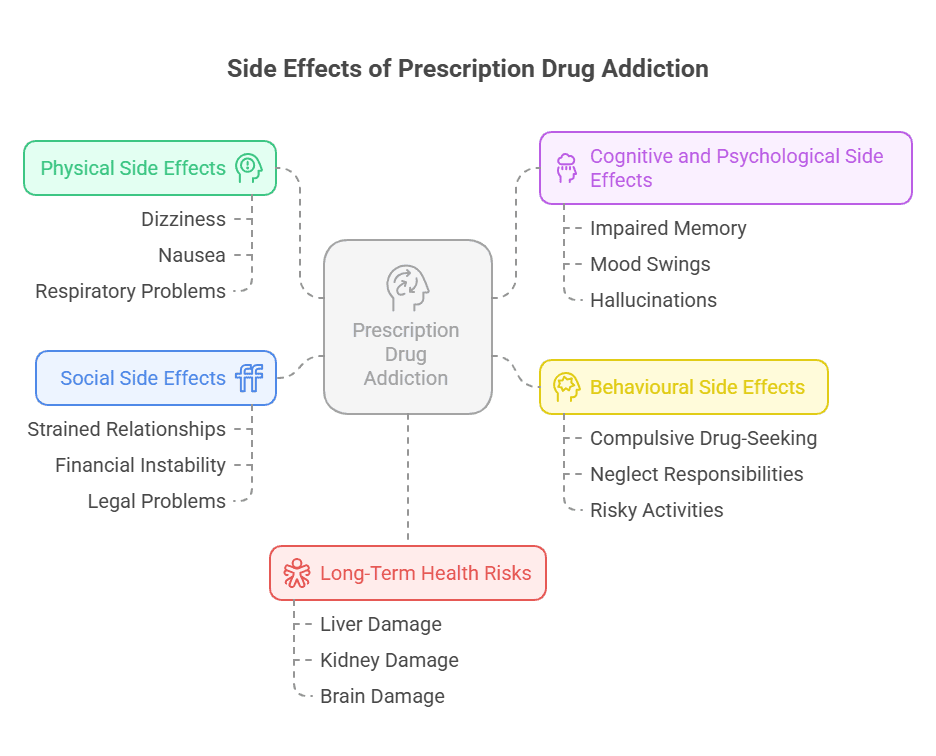
What Are the Withdrawal Symptoms of Prescription Drug Addiction?
The withdrawal symptoms of prescription drug addiction differ depending on the type of drug, duration of use, and level of dependence, as explored below:
- Physical Withdrawal Symptoms: include sweating, tremors, muscle aches, fatigue, nausea, vomiting, diarrhoea, abdominal cramps, rapid heartbeat, high blood pressure, and seizures in extreme cases.
- Psychological Withdrawal Symptoms: Anxiety, depression, irritability, restlessness, panic attacks, and intense drug cravings are experienced.
- Cognitive Withdrawal Symptoms: Difficulty concentrating, memory lapses, and confusion ensue during the withdrawal phase.
- Sleep-Related Withdrawal Symptoms: Insomnia, vivid dreams, and frequent sleep disturbances are persistent with sedatives and hypnotics.
- Severe Complications: For certain medications, such as benzodiazepines and opioids, withdrawal without medical supervision is dangerous and sometimes life-threatening.
What Is the Treatment for Prescription Drug Addiction?
The common treatment for prescription drug addiction is a structured de-addiction process that combines medical, psychological, and behavioural approaches, as elaborated below.
- Medical Detoxification: Supervised detox manages withdrawal symptoms safely, using tapering strategies or medications like buprenorphine, methadone, or naltrexone for opioids, and slow dose decrease for benzodiazepines.
- Inpatient or Outpatient Rehabilitation: Residential programs provide 24/7 care, while outpatient programs allow individuals to continue daily responsibilities while receiving therapy.
- Behavioural Therapies: Cognitive Behavioural Therapy (CBT), Motivational Interviewing (MI), and Contingency Management aid individuals in identifying triggers, changing harmful thought patterns, and building coping skills.
- Medication-Assisted Treatment (MAT): For opioid and sedative addictions, MAT cuts cravings and stabilises brain chemistry, bolstering long-term recovery chances.
- Support Groups: Participation in 12-step programs or peer support groups offers community-based encouragement and accountability.
- Dual Diagnosis Treatment: When addiction co-occurs with mental health disorders like depression or anxiety, integrated treatment is essential for effective recovery.
What are the Recovery Strategies for Prescription Drug Addiction?
The common recovery strategies for prescription drug addiction cover long-term lifestyle changes and supportive interventions. These are:
- Relapse Prevention: Identifying triggers and developing coping strategies.
- Support Networks: Family therapy and peer groups reinforce accountability.
- Healthy Routines: Exercise, proper nutrition, and sleep hygiene boost general resilience.
- Mindfulness Practices: Techniques such as meditation and yoga regulate stress.
- Medication Management: Regular review of prescriptions to preclude recurrence.
- Aftercare Programs: Continued counselling, sober living arrangements, and alumni networks sustain progress.
What is the Role of Healthcare Providers in Prescription Drug Recovery?
Healthcare providers play a critical role in prevention and recovery. Responsible prescribing practices, patient education, and regular monitoring help reduce misuse risks. Early screening for signs of dependence ensures timely intervention, while integrated care models ameliorate treatment outcomes.
A multi-centric study by the Indian Council of Medical Research reviewing 4,838 prescriptions from tertiary hospitals in India found that 9.8% showed unacceptable deviations from treatment guidelines. With adherence averaging only 55%, Shetty et al. 2024 in “Evaluation of Prescriptions From Tertiary Care Hospitals Across India for Deviations From Treatment Guidelines & Their Potential Consequences” noted that such lapses risk adverse drug reactions, drug interactions, higher costs, and diminished therapeutic response, making prescribing behaviour a crucial factor in patient safety and recovery.

